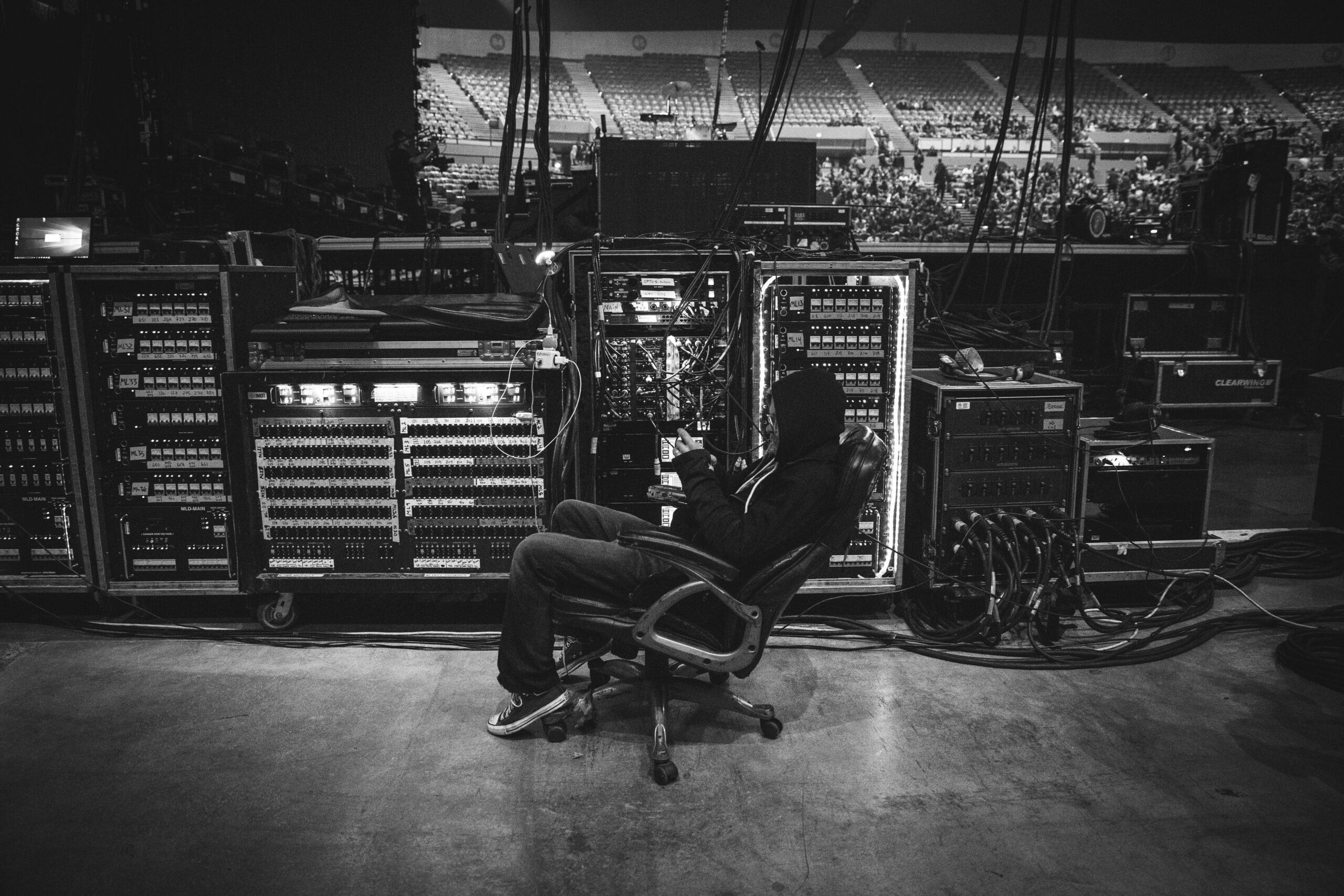In a world where entertainment events can shift from exhilarating to chaotic in moments, the need for effective risk management is clear. With thousands gathering for concerts, festivals, and productions, ensuring public safety and event continuity is paramount. Risk management not only protects attendees but also safeguards reputations, workers, and financial outcomes within the industry.
The Australian entertainment sector faces distinct challenges—from hazardous stunts to complex pyrotechnics—each requiring meticulous oversight. The handling of animals, crowd behaviour, and hazardous substances further complicates production. As a result, industry-specific practices and stringent Work Health and Safety (WHS) regulations are critical for mitigating risks.
This article explores risk management strategies relevant to Australia’s entertainment industry, including best practices for high-risk activities, planning considerations, WHS compliance, and emerging challenges such as sustainability and technology.
Why Risk Management Matters in Entertainment
Risk management is vital for ensuring compliance with Australian legislation and protecting all stakeholders—crew, performers, contractors, and audiences. Using formal risk management frameworks, such as AS ISO 31000, allows event organisers to evaluate and minimise risk effectively.
A comprehensive safety plan is central to this process. It identifies hazards (e.g. special effects or extreme weather), sets out emergency procedures, and outlines the necessary licences or permits. Safety measures like public protection protocols, evacuation routes, and staff training are fundamental to meeting duty of care obligations.
Keeping unnecessary personnel informed and having qualified teams on-site—such as safety officers, fire wardens, and medics—ensures incidents are managed quickly and professionally, supporting both live events and long-term industry sustainability.
Managing High-Risk Activities in Productions
In Australia, WHS regulations place clear duties on Persons Conducting a Business or Undertaking (PCBUs) to manage safety during high-risk activities. Whether filming near water or coordinating complex stunts, thorough risk assessments are non-negotiable.
For example:
- Water-based scenes require assessment of vessel type, water conditions, and the presence of marine life.
- Permits and local approvals must be secured for public events, including venue permissions and traffic management plans.
- Licensed professionals must oversee weapons (excluding firearms), stunts, pyrotechnics, and the handling of dangerous animals or materials.
Use of Weapons
Any use of weapons in performance—particularly real or edged items—requires safety oversight. The First Assistant Director (AD) should inspect all weapons, and rehearsals must be conducted with dummy or blunted props under supervision. Choreography should be designed to ensure performer safety.
Pyrotechnics
Special Effects Coordinators (SFX) are responsible for all pyrotechnic design and deployment. In Australia, they must hold appropriate pyrotechnics licences and carry valid permits on-site. Safety walkthroughs should precede any effect, and emergency plans must include evacuation and fire response procedures.
Stunts
Stunt safety begins in pre-production. The Producer, Safety Supervisor, and Stunt Coordinator should collaborate on detailed risk assessments and ensure certified professionals are present during high-risk sequences. Site surveys are essential to anticipate hazards and plan for safe execution.
Animal Handling
Productions involving animals must adhere to national codes of practice. Incompatible species must be housed separately, and sets must be kept closed during animal scenes to minimise stress. Distressing or painful handling methods are strictly prohibited, and veterinary support must be readily available.
Industry-Specific Practices in Live Events
Companies such as Avert Assure specialise in crowd and risk management for major events in Australia. Drawing from nearly three decades of experience, they provide services aligned with Australian Standards (AS/NZS ISO 31000) and WHS legislation, including trained safety officers, emergency wardens, and medical staff.
Art Departments and Hot Work
Art departments conducting hot work (e.g. welding) must follow AS 1674.1–1997. This includes risk assessments, fire watch personnel, and having firefighting equipment on hand. Permits must be issued before commencing such work.
Camera Operations
Safety around camera movement—especially robotic rigs or motion control systems—requires clearly designated personnel, crew briefings, and restriction of access to active areas. Calls such as “rig moving” ensure crew awareness. Motion capture setups should use isolated power and be coordinated with the Gaffer.
Handling Hazardous Substances
Hazardous materials on set must be clearly labelled, stored, and accompanied by Safety Data Sheets (SDS). PCBUs must ensure staff have access to these and that appropriate PPE is available—though PPE is considered a last resort after other controls.
Key Considerations in Event Planning
Planning safe public events involves:
- Securing necessary licences (e.g. liquor, venue hire, traffic control)
- Employing licensed security personnel, particularly at events with alcohol
- Preparing medical and emergency transport support
- Monitoring for common injuries (e.g. slips, crowd surges)
- Using video surveillance and real-time crowd monitoring, including social media tracking
Crowd Management
Effective crowd control is essential. Consultation with the NSW Police Force or relevant state authorities ensures appropriate planning. A clear site plan showing entrances, exits, facilities, and potential hazards supports crowd flow and emergency access. Companies like Avert Assure offer tailored crowd strategies for Australian venues, considering legal obligations, insurance, and reputational risk.
Emergency Planning
Events must have custom emergency response and evacuation plans. These differ from standard business procedures, as events often involve temporary structures and remote locations. Ensure that Triple Zero (000) procedures are known, and prepare for mobile blackspots in regional areas by coordinating with telcos. Colour-coded communication systems can assist in managing public messaging during emergencies.
Alcohol Management
Responsible Service of Alcohol (RSA) is mandatory for staff and security. ID checks and over-18 wristbands help maintain order. Drinking water, food, and soft drinks should be available to support responsible consumption. An emergency plan must detail procedures for ceasing alcohol service when necessary.
Environmental Safety
Environmental factors play a major role in event safety. Pollution of waterways is illegal, so safe disposal of chemicals and waste is essential. Use chemical toilets for on-water events and assess both natural and man-made environmental risks. Terrorism preparedness is also part of broader national crowd risk guidelines. Sustainability is becoming a greater priority, with emissions reduction and eco-friendly operations now central to planning for large-scale entertainment events.
Understanding WHS Legislation in Australia
The Work Health and Safety Act 2011 (Cth) outlines the legal duties of a PCBU in ensuring workplace safety. All workers—including contractors, volunteers, and apprentices—have the right to a safe environment. Health and Safety Representatives (HSRs) may be elected to advocate for safety improvements.
Early hazard identification and consultation help PCBUs reduce risks while meeting their legislative obligations.
| Role | Description |
|---|---|
| PCBU | The business entity with legal safety duties |
| Worker | Any person performing work, including volunteers |
| HSR | Elected representative for workgroup safety matters |
Hazard Identification
Producers must inform cast and crew about hazardous substances and ensure proper safety protocols are followed. PPE should only be used once elimination or substitution is not possible. Firefighting equipment must be accessible, and emergency procedures clearly communicated.
Risk Assessment and Management Planning
Scripts must be assessed for potential hazards, especially involving SFX or crowd sequences. Safety reports and scene-by-scene breakdowns help identify and control risks early. Producers are responsible for consulting with experts like Safety Supervisors, SFX Coordinators, and medical teams throughout the process.
Emerging Challenges in Events
As Australia’s entertainment industry rebounds post-COVID-19, organisers must balance enthusiasm with caution. Large events require complex security planning, including coordination with police, private security, and lost property systems.
Technology, changing audience behaviours, and sustainability demands are all shaping the way events are designed and delivered. Risk management must evolve alongside these trends.
Sustainability in Production
The Australian entertainment sector is under pressure to reduce its environmental impact. From festivals adopting zero-waste policies to productions tracking carbon footprints, sustainability is now embedded in risk planning. For example, recent tours and awards ceremonies have incorporated eco-conscious goals, such as sustainable catering and travel offsets.
Technology and Risk
Technology has created new access points and risks. Platforms like TikTok and YouTube have democratised entertainment but raised the bar for content quality and production complexity. Insurers and legal teams now require robust risk mitigation procedures for digital productions, especially involving stunts or high-value equipment.
Summary: Risk Management Strategies for Australian Events
| Strategy | Description |
|---|---|
| Early Planning | Begin risk assessments early to identify hazards before stakeholders come on board |
| Comprehensive Security | Work with police and security to manage access, emergencies, and prohibited items |
| Sustainability Targets | Implement environmentally responsible practices for compliance and reputation |
| Technological Adaptation | Incorporate safety protocols in line with digital content creation and distribution |
| Public Safety Planning | Prioritise crowd safety, medical response, and communications |
Partnering with Hemisphere: Leading Event Health & Safety
Hemisphere is Australia’s premier partner for entertainment health and safety. Founded by Dr Bill Anseline, Hemisphere brings decades of experience supporting performers, crew, and event organisers across the country.
They offer:
- Medical and wellness services (including 24/7 telehealth and on-site clinicians)
- Risk management planning aligned to WHS legislation
- Allied health services (e.g. physiotherapy, mental health support)
- Nationwide coverage across Australia and New Zealand
By integrating seamlessly into productions—from festivals to touring shows—Hemisphere helps reduce downtime, mitigate risk, and support performance excellence. Their approach combines regulatory compliance with compassionate care, ensuring safety and success at every scale.


